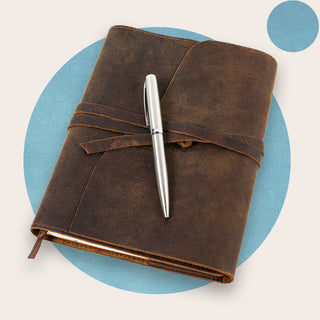Have your leather items been infiltrated by mold? Has your safe place for leather been ravaged by an outbreak of mildew? Want to learn how to remove mold from leather?
Then you are in the right place, for this is precisely what we will be exploring in-depth today, with some brief explanations of what mold is and how to prevent it too!

What is Mold?
Put simply, mold is a variety of fungi that can appear and spread on things that are damp or decaying, especially if they happen to be organic surfaces. Thus, leather shoes, and any leather goods, are susceptible to its ill effects.
Mold, though seemingly harmless at first, can cause significant damage to the organic material in question, encouraging discoloration and fostering the development of bad odors and eventual decay.
Mildew, for example, is a type of mold that can make itself known on a leather surface, though there are plenty of other varieties. It will take more than a leather conditioner to rid your leather boots, leather car seats, or leather furniture of mold growth.

Things You Will Need
What follows is a list of things that you will need to do a proper job of removing mold spores:
- Equipment
- Soft-bristled brush
- Vacuum
- Buckets
- Portable fan (optional)
- Materials
- Saddle soap / mild detergent
- Chlorine bleach
- Rubbing alcohol
- Leather conditioner
- Tissue paper
- Cotton swabs
- Clean cloths/sponges
- Oxygen bleach (optional)
Step 1: Set Up
To ensure that you do not spread spores throughout your home, it is best to at least do the initial cleaning outside of your house, trying your best not to trail them back in when you eventually return indoors.
Once you have set up a little station for yourself outside, use the soft-bristled brush or a dry and clean cloth to brush away the spores on the surface of the leather, whether they be leather dress shoes or otherwise.
If the item(s) in question were stored in cardboard boxes, then you would be doing yourself a favor by discarding those immediately. If the containers within which they were kept were made of fabric, then you will want to wash them with hot water and dry them on high heat to ensure that you have removed all of the mildew spores. Plastic storage containers can easily be cleaned with a solution of chlorine bleach and water and left to air dry in the sun.
The place in which the items were originally stored should also be emptied of all the other contents and vacuumed to within an inch of its life. Also, wipe down the walls and floors (if not carpeted) to the best of your ability with a mixture of bleach and water, ensuring that the place has dried completely before you use it again.
Step 2: Killing the Spores
Now it is time to start cleaning mold the right way, to prevent mold and ensure that it doesn't come back again.
In a clean container, mix a solution of equal parts cool water and rubbing alcohol together. Then, use a clean soft cloth dipped in the mixture to wipe down the leather items, safe in the knowledge that this is better than any leather cleaner. In order to reach the furthest crevices of the item, use a cotton swab so that you might reach where you otherwise mightn't.
Finish up the process by wiping the leather down with a clean cloth that has been dipped in plain water, so as to remove the solution from the surface once it has done its work.
Make sure you allow the item(s) to air-dry away from the influence of direct heat or sunlight as these things alone can warp a piece of leather beyond recognition. To help leather shoes and boots keep their shape, try stuffing them with plain white paper or tissue paper. Avoid newsprint as this can very easily stain your socks later down the line.
Step 3: Wiping Down
Now, you will want to give the leather itself a proper cleaning to restore its luster and get it looking as beautiful as it can.
Take a small plastic container and mix mild detergent or leather saddle soap with warm water as per the specifications on the packaging. Use a clean cloth or sponge to wipe down all the surfaces, regardless of whether they are real leather or faux leather. While you are at it, you may as well give the insides of the item a good clean too, especially if they are a type of footwear.
Afterward, as before, make sure to wipe away any of the soapy residue with a separate cloth dipped in clean water, so that the soap can finish its work and not exert any more influence on the leather item.
Taking care of your items in this way is just a great way to ensure their longevity. Leather sure is a hardy material and in this way, it's no wonder it has been called upon time and time again for its endurance and aesthetic beauty while doing it. However, everything needs to be nurtured at some point.
Step 4: Air-Dry
If you haven't already, now would be an opportune moment to properly dry your leather items so that the water in the solutions you have used cannot later wreak havoc upon them. This tends to take the form of warping and/or discoloration, neither of which you will want for your own leather items.
To do this, you will want to hang leather clothes on a sturdy and robust hanger so that they may dry in their own shape. Alternatively, you can place them on a flat surface if you feel that would be more appropriate.
As already discussed, make sure above anything that you do not place the item near direct heat or directly under the rays of the sun. This can, as elucidated above, cause discoloration and warping almost beyond recognition, and these kinds of distortions are basically impossible to reverse.
If the leather item you are drying is a pair of shoes, then ensure that you stuff them with plain paper that is not printed with anything so they retain their shape during the drying process.
If you want to speed up this drying process, try using a fan to circulate air quicker.
Step 5: Conditioning
Now that you have properly dried the leather out, you can go about getting it back to its original luster, using leather conditioner to bring back its shine. You can use any type of leather conditioner, though it might be worth forking out a little extra if you really care about your leather product. Mink oil, for example, works well with leather, especially if the leather happens to be particularly chapped.
Leather conditioners of this kind will never feature any additives precisely because of the effect such additives can have on the finished product. Once you have dehydrated leather in this way (and especially if you have left it in direct sunlight to dry) it can be difficult to turn back.
Leather is, after all, a natural product, the flayed skin of an animal that has been preserved for your convenience. Just like human skin, it needs to be moisturized every so often if there is any hope of it enjoying a supple finish.
Your best is to follow the specific instructions that come with the leather conditioner that you are using, or alternatively follow some separate guidance if you happen to be using a conditioner that is not specifically meant for leather.
Final Words
So, there you have it! Hopefully, you are now feeling up to the task of ridding your leather items of that pesky mold!
FAQs How to Remove Mold from Leather
WILL VINEGAR KILL MOLD ON LEATHER?
Yes, it can. Try mixing vinegar in a 1:1 ratio with water for the optimum effect.
WHAT KILLS MOLD ON LEATHER?
If looking for simple fixes around the house, rubbing alcohol and vinegar have both been shown to kill mold when mixed with water, though the former perhaps does the job more permanently.
IS ALCOHOL OR VINEGAR BETTER TO KILL MOLD ON LEATHER?
For leather, alcohol is better suited to removing mold, as it is better for fabrics and the like. With regard to hard surfaces, bleach, and vinegar are far better suited to the job.
DOES VINEGAR DAMAGE LEATHER?
Not if the vinegar has been mixed with water in equal amounts. There is a chance, though, that vinegar, if met directly with leather, might cause some damage.
WHAT KIND OF MOLD GROWS ON LEATHER?
One of the most common types of mold that appears around the house is mildew, though there are plenty of other lesser-known varieties of fungi that have been known to plague a house and the items within it from time to time.



